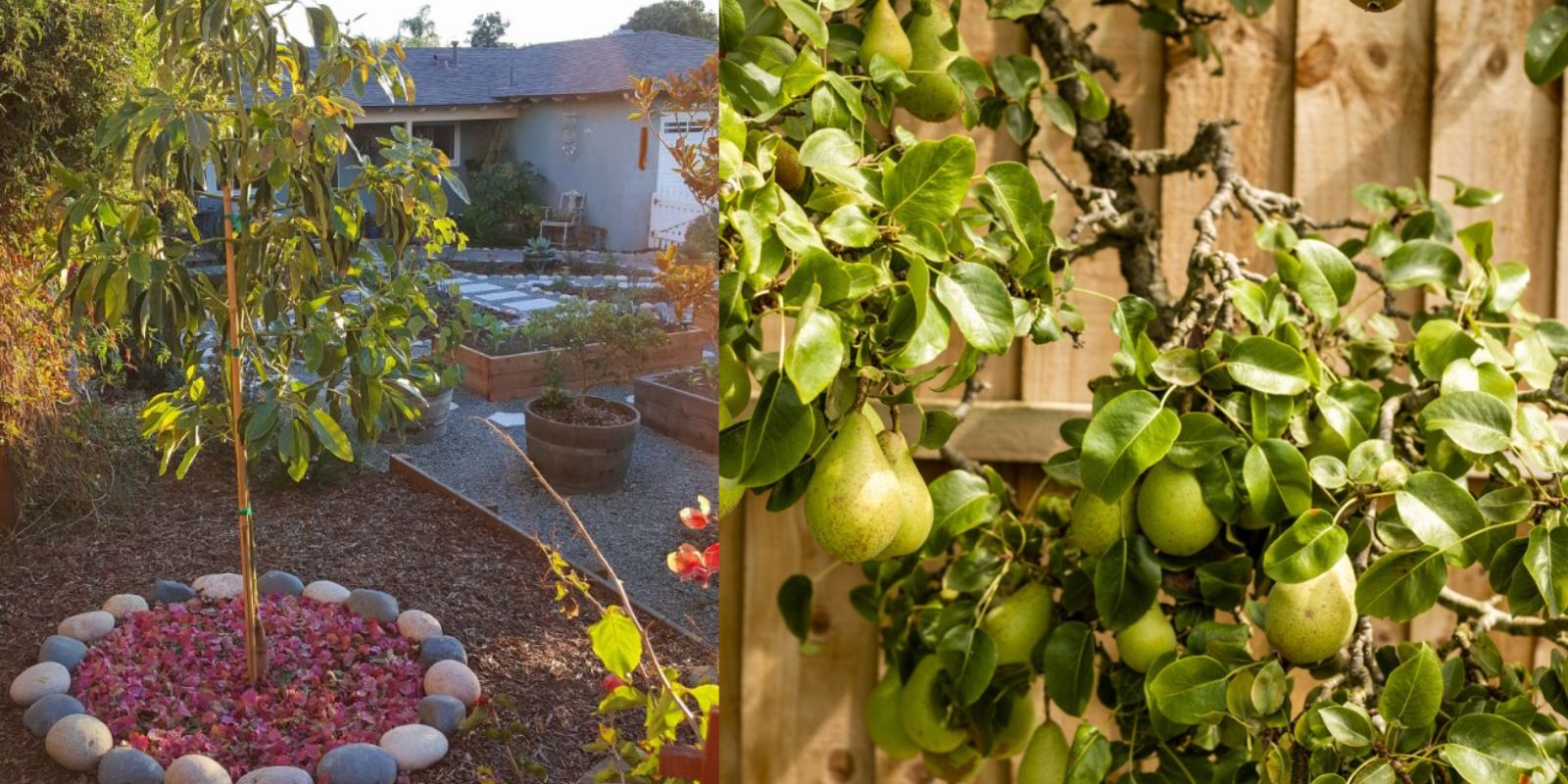Growing fruit trees in your backyard not only enhances the beauty of your garden but also provides you with a steady supply of fresh, homegrown fruit. Whether you dream of juicy apples, sweet peaches, or tangy citrus, planting and caring for fruit trees can be a rewarding experience. This guide will walk you through everything you need to know to successfully grow fruit trees in your backyard, from selecting the right varieties to maintaining their health and productivity.
Choosing the Right Fruit Trees
1. Know Your Climate:
The first step in growing fruit trees is selecting varieties that are suited to your local climate. Different fruit trees thrive in different conditions, so it’s essential to choose ones that can handle the temperatures, rainfall, and other climate factors of your region. For example, apple trees are often suited to cooler climates, while citrus trees prefer warmer environments.
2. Consider Soil Conditions:
Fruit trees have specific soil requirements. Most prefer well-draining soil with a pH level between 6.0 and 6.8. Before planting, test your soil to determine its pH and texture. If your soil is heavy clay or sandy, you may need to amend it with compost or organic matter to improve drainage and nutrient availability.
3. Select the Right Variety:
Choose fruit tree varieties that are known for their disease resistance and suitability to your local environment. Look for local recommendations or consult with a local nursery to find varieties that have a proven track record in your area.
Preparing Your Garden for Planting
4. Pick the Perfect Spot:
Fruit trees need ample sunlight to thrive. Choose a location in your garden that receives at least 6 to 8 hours of direct sunlight each day. Ensure the area has good air circulation to reduce the risk of fungal diseases.
5. Prepare the Soil:
Before planting, prepare the soil by clearing the area of weeds and debris. Dig a hole that is twice as wide and as deep as the root ball of the tree. Mix the excavated soil with compost to enrich it. This will provide the young tree with a nutrient-rich environment to grow in.
6. Planting Your Tree:
Place the tree in the center of the hole, making sure that the graft union (the bulge where the tree was grafted onto the rootstock) is above the soil line. Backfill the hole with the amended soil, gently tamping it down as you go to remove air pockets. Water the tree thoroughly after planting to help settle the soil and reduce transplant shock.
Caring for Your Fruit Trees
7. Watering:
Fruit trees need consistent moisture to establish their roots and grow. Water the trees regularly, especially during dry periods. Aim to keep the soil evenly moist but not waterlogged. As the tree matures, reduce the frequency of watering but increase the depth of watering to encourage deep root growth.
8. Mulching:
Apply a layer of organic mulch around the base of the tree, extending out to the drip line. Mulch helps retain soil moisture, suppress weeds, and regulate soil temperature. Keep the mulch away from the trunk to prevent rot.
9. Fertilizing:
Fertilize your fruit trees with a balanced fertilizer designed for fruiting plants. Follow the manufacturer’s instructions for the correct application rates and timing. Generally, fertilize in early spring before new growth begins and again in mid-summer.
10. Pruning:
Regular pruning is essential for maintaining the health and productivity of your fruit trees. Prune young trees to establish a strong framework and remove any dead or diseased wood. For mature trees, thin out crowded branches to improve air circulation and light penetration. Prune fruit trees in late winter or early spring before new growth begins.
Managing Pests and Diseases
11. Monitor for Pests:
Fruit trees are susceptible to various pests, including aphids, mites, and caterpillars. Regularly inspect your trees for signs of pest infestations, such as distorted leaves or chewed fruit. Use organic pest control methods, such as insecticidal soap or neem oil, to manage pests without harming beneficial insects.
12. Prevent and Treat Diseases:
Common fruit tree diseases include powdery mildew, rust, and blight. To prevent diseases, ensure proper spacing between trees for good air circulation and avoid overhead watering, which can promote fungal growth. If you notice signs of disease, remove affected plant parts and treat with appropriate fungicides or organic treatments.
13. Pollination:
Some fruit trees require cross-pollination to produce fruit. If your tree needs a pollinator, plant compatible varieties nearby or consider adding a pollinator-friendly plant to attract bees and other pollinators. Check the specific requirements for your fruit tree varieties.
Harvesting and Enjoying Your Fruit
14. Harvest at the Right Time:
Harvesting fruit at the right time is crucial for the best flavor and quality. Each fruit variety has its own harvest indicators, such as color change, firmness, or aroma. Research the specific signs of ripeness for your fruit trees to ensure you pick the fruit at its peak.
15. Enjoy the Fruits of Your Labor:
Once harvested, enjoy the fresh, homegrown fruits of your labor. Use them in your favorite recipes, preserve them for later use, or share them with friends and family. The taste of homegrown fruit is truly unbeatable.
Conclusion:
Growing fruit trees in your backyard can be a deeply rewarding experience, providing you with fresh, flavorful fruit and enhancing the beauty of your garden. By selecting the right varieties, preparing your garden properly, and providing ongoing care, you can enjoy a bountiful harvest of homegrown fruit for years to come. Start planning and planting today to create your very own backyard orchard!
Motivation:
Transform your backyard into a fruitful paradise! Start planting fruit trees today and savor the joy of homegrown produce right at your doorstep.
Hashtags: #FruitTrees #BackyardOrchard #HomegrownFruit #GardeningTips #FruitGarden #GrowYourOwn #GardeningJoy

